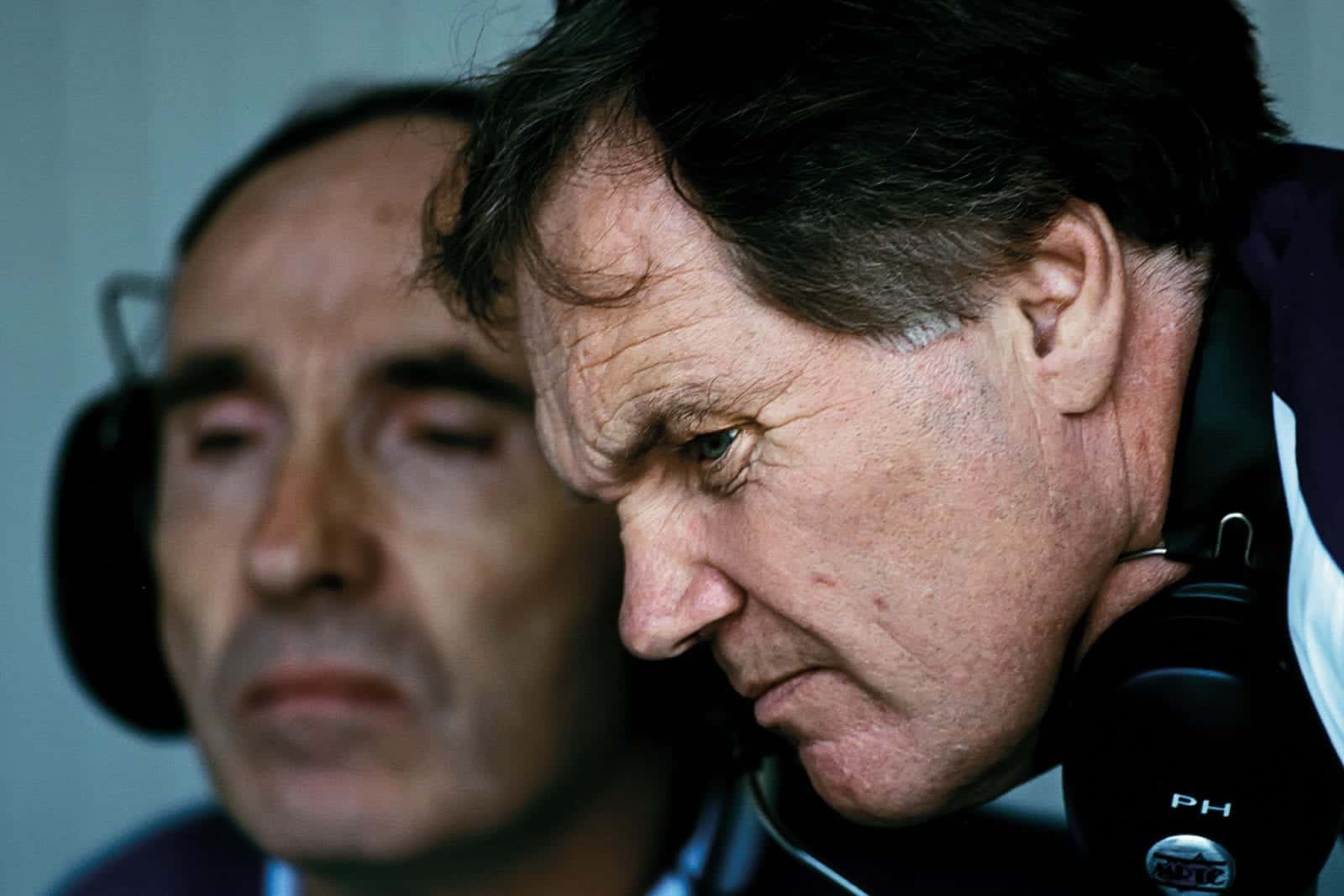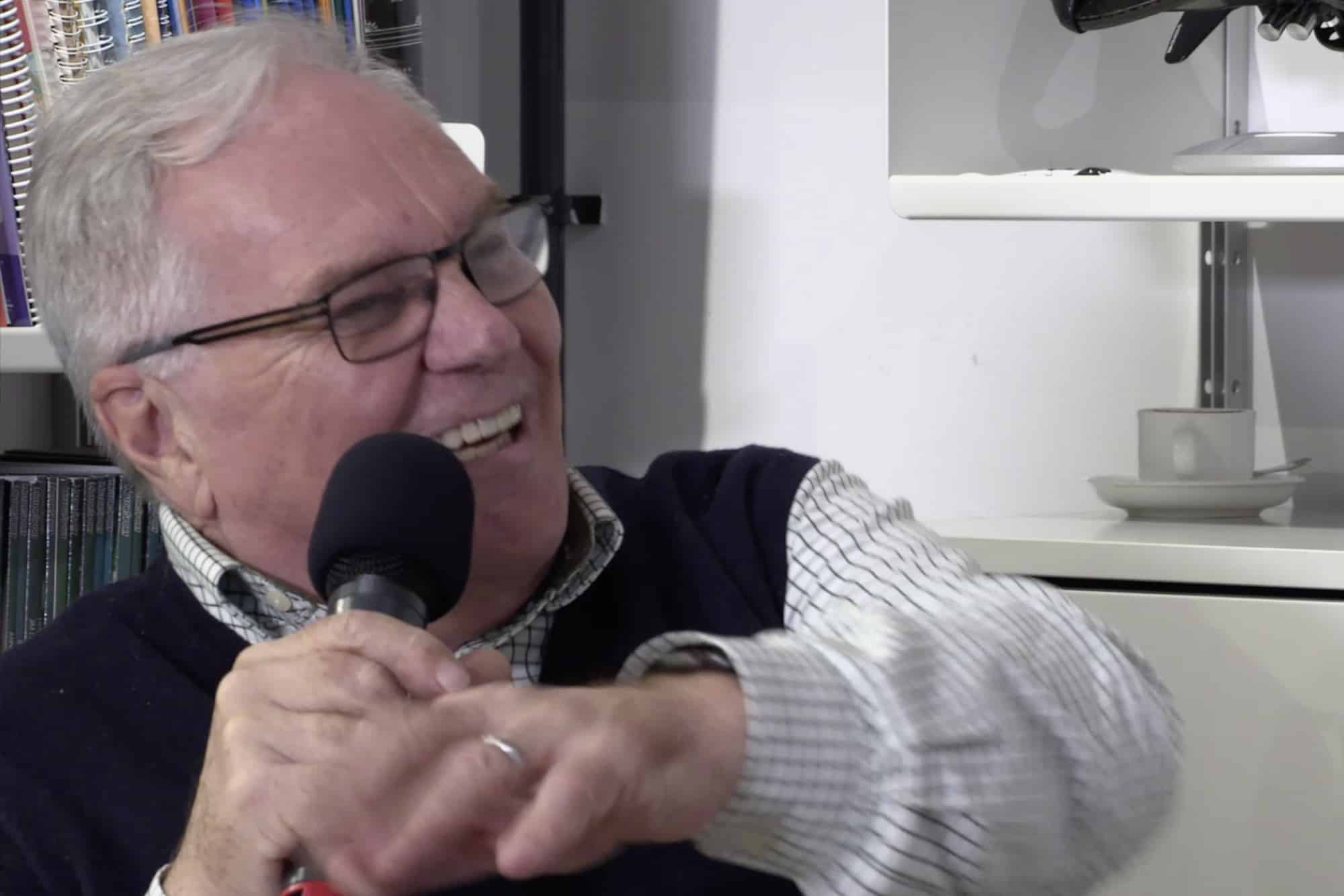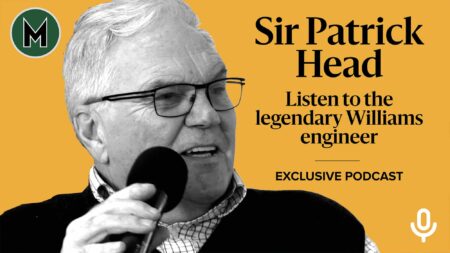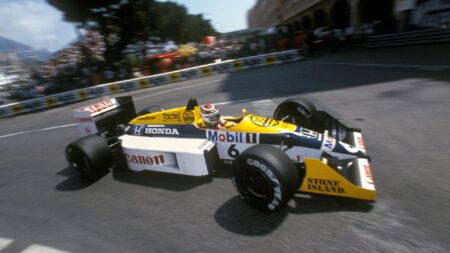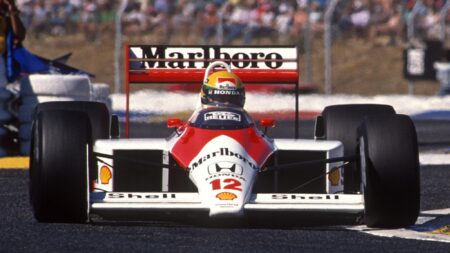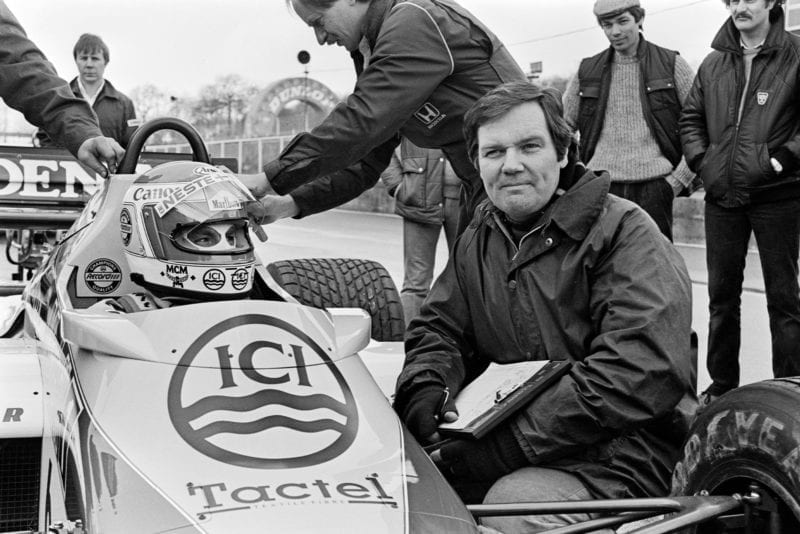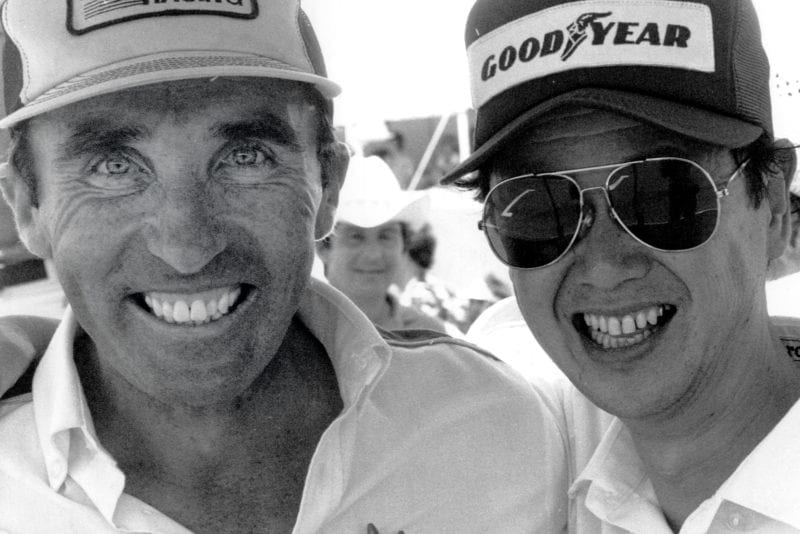A block, sump and heads, plus two turbochargers in a box and three alternative length inlet manifolds were delivered to Williams by a van driver, with no paperwork at all. At that time, communication was by telex – I remember the ‘dah dah dah’ chattering away down below in the front office – so I sent a message by telex saying, ‘could you please advise for a heat balance for the engine?’. I asked for heat balance and installation details. They came back, and I have still got the telex somewhere, ‘Please design as you think’.
One of our engineers, Gary Thomas, started on the engine installation, which included learning about the thermodynamics of a turbo engine. Gary used to race motorcycles badly and come off them very often, including at the Isle of Man, so one was always worried about losing him… He worked away on the heat balance, with me checking in every now and then, and we worked everything out for ourselves. We produced this very basic car, the FW09. It wasn’t a beauty to look at, and it wasn’t hugely successful. It was usually a question of how far we’d get before the pistons came out of the exhaust pipe, as it still had F2 pistons. It didn’t have all the piston cooling, but it also had an incredibly low compression ratio, something like 6:1. If you put your foot on the throttle at low revs, you had almost nothing, maybe 150bhp, and then suddenly the turbos would kick in. How Keke [Rosberg] drove it I have no idea.

Keke in 1984
We were having a terrible time in 1984 – mostly with melted pistons and aluminium sprayed neatly down the inside of the exhaust systems. It would be like a nice skin neatly lining the exhaust, melted pistons!
Mr Kawamoto turned up at Zandvoort and he realised it wouldn’t work: ‘We are not taking this seriously and we’re getting a bad reputation for not being reliable’.
I remember once in Montréal there were six mechanics, three down one side and three down the other, changing the bearing caps and the bearing shells on the engine at the track like they had in motorcycle racing! It was very different.
